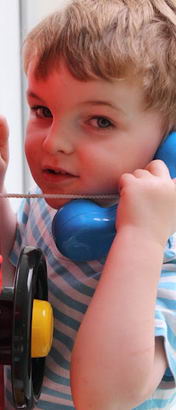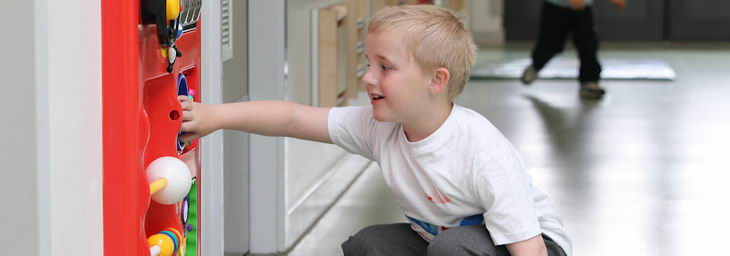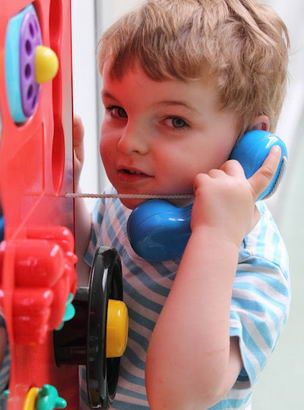
An ISE was developed for adults with PMLD. However, these key principles also apply to children (Bunning, 1996).
Its aim is to reduce the level of non-purposeful engagement (stereotypical actions, self injury and neutral behaviour) and increase the levels of purposeful interaction with people and objects.
The results showed an increase in purposeful interactions and a reduction in non-purposeful engagement after ISE.
If you want to find out more about the sorts of objects you can use in this type of programme read the information sheet on Bunning's thesis.

ISE operates on the principle that if learners want an object enough then they will be very motivated to indicate 'more' (in some way) when the object is removed.
The object (a tray of dried pasta for example) is presented to each learner, who is then encouraged to interact with it. They may touch, or taste or smell the pasta with (initial) support or not, for a period of time – say 30 seconds or so.

When the tray is withdrawn, the presenter will observe the learner's reaction, assuming that interest will be supported by a look or a reach or a vocalisation to indicate that the learner wants more. The tray is re-presented to the learner and this may be repeated two to three times more. If initial interest is discovered, the pasta tray will be presented to the learner at other times of the day and week, by other presenters, to ensure that the motivation to engage with the object has some consistency of intent.
If the tray is rejected or the learner shows disinterest, the presenter should try again at other times. This will provide a safety net, to make sure that the rejection or disinterest was not affected by some other external factor – such as too much noise in the classroom or general sleepiness on the learner's part.
ISE is immensely useful as a means of:
- Discovering likes and dislikes;
- Structuring the environment to provide meaningful forms of stimulation to foster purposeful responses;
- Decreasing stereotypical self-stimulations;
- Using sensory stimuli to encourage the learner to engage in purposeful behaviours rather than non-purposeful.
The final point is particularly pertinent. Especially when one considers the amount of 'down-time' that the average person with PMLD is likely to have throughout the course of their lives – not just at school, but at home, at respite and at residential placements in adulthood.

Teachers use ISE as a means of discovering the sensory preferences of each child. The programme demands feedback from the learners and teaches us that even learners who we think we know very well may well have favourite things which we don't know about. This is because they don't know about them yet either. It teaches us that we are all different and that we need to find the right motivators if we are to engage learners successfully (Carpenter, 2010).
It might also be useful if teachers suspend the curriculum on a regular basis for perhaps as long as a term at the beginning of every key stage. This will allow them to check that the sensory preferences displayed at the beginning of the last key stage still apply.
Remember, if we don't ask the questions we won't get
the answers.

Bunning, K. (1996) Development of an 'Individualised Sensory Environment' for Adults with Learning Disabilities and an Evaluation of its Effects on their Interactive Behaviours, unpublished thesis, London: City University.
Bunning, K. (1998) To engage or not to engage? Affecting the interactions of learning disabled adults, International Language and Communication Disorders, 33, 386-391.
Carpenter, B. (2010) Curriculum Reconciliation and Children with Complex Learning Difficulties and Disabilities, London: Specialist Schools and Academies Trust.